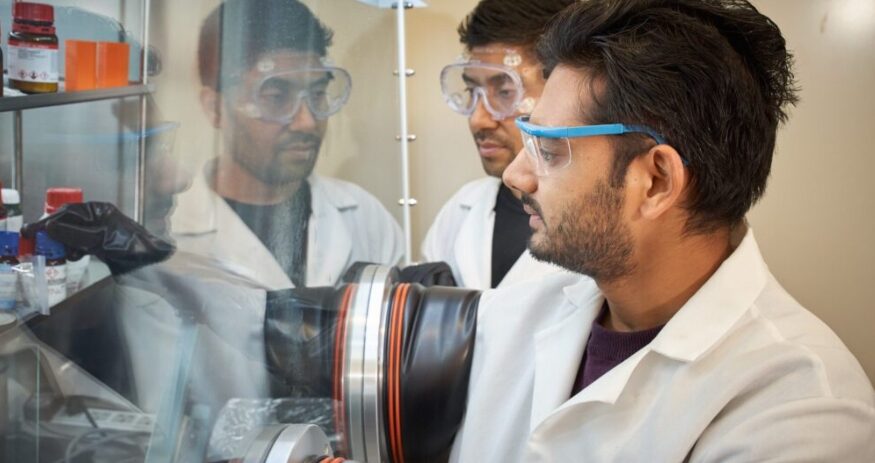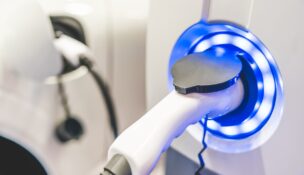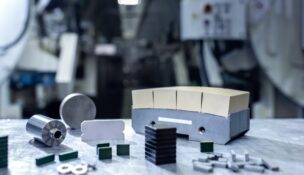How Clemson University research could affect your access to lithium ion batteries
Ross Norton //April 24, 2024//

Graduate students Nawraj Sapkota and Janak Basel work in the lab of Apparao Rao at the Clemson Nanomaterials Institute. (Photo/Clemson University)

Graduate students Nawraj Sapkota and Janak Basel work in the lab of Apparao Rao at the Clemson Nanomaterials Institute. (Photo/Clemson University)
How Clemson University research could affect your access to lithium ion batteries
Ross Norton //April 24, 2024//
Clemson University researchers hope to extend the availability of lithium-ion batteries by bolstering the usefulness of an alternate source of power storage — sodium-sulfur batteries.
Lithium-ion batteries are today’s dominant energy storage devices for vehicles and electronic gadgets, but experts estimate a supply deficit by the 2030s, according to a university news release. Sodium-sulfer batteries are too heavy to replace many of the lithium-ion applications such as cell phones and electric vehicles, but could relieve some of the pressure on the lighter storage source.
Sodium-sulfur batteries have a high theoretical capacity, low cost and high energy density, according to Apparao Rao, the R.A. Bowen Professor of Physics in the Clemson University Department of Physics and Astronomy.
“Battery manufacturers are realizing that there are a lot of applications where you don’t need lithium and can do just as well with sodium or potassium ion batteries,” Rao said in the release.
Lithium-ion batteries have a higher energy/weight ratio, making it better suited for mobile uses. But for other uses, sodium-ion batteries are less expensive and are readily available, he said.
“A good example is solar panels that can store energy in a stationary battery bank during the day,” Rao said in the release. “The number of batteries is not a concern because it is not mobile. That’s the niche for sodium-ion batteries.”
But there are challenges to overcome with sodium-sulfur batteries. Polysulfide shuttle leads to rapid capacity loss, which is undesirable. Additionally, dendrite growth can cause internal short-circuits, leading to fires that are a growing public safety concern, the release stated.
Three members of Rao’s lab — postdoctoral fellow Mihir Parekh and graduate students Janak Basel and Nawraj Sapkota — have discovered through a combined experiment and molecular dynamics simulation a way to optimize electrolytes to address both problems.
While lithium has become essential because of the boom in electronics and electric vehicles, it is scarce and found only in some countries.
“There are geopolitical constraints with lithium availability. Sodium, on the other hand, is readily available. You can get it from seawater,” Sapkota said in the release.
The lab first explored lithium-sulfur batteries, which stand out among lithium-ion alternatives because their sulfur cathodes boast an exceptionally high theoretical capacity. Sulfur is also cost-effective and readily available. However, elemental sulfur reacts with lithium during the battery’s charge-discharge cycles forming long-chain polysulfides, which shuttle between the electrodes, leading to a capacity loss and cell failure, the release stated.
“Long-chain polysulfides are created in the battery if you use sulfur-based cathodes, and we don’t want them because they lead to a drop in capacity,” Parekh said in the release.
To eliminate the polysulfide shuttling, the researchers used sulfurized polyacrylonitrile instead of elemental sulfur as the cathode material. But that didn’t solve the problem completely. Dendrites are like sharp whiskers of lithium that grow inside batteries, the release stated. They form due to uneven deposition of lithium during the charging process. If the dendrites reach the other electrode, it causes the battery to short-circuit.
To prevent dendrites, the researchers engineered the electrolyte — comprised of a solvent plus a salt — so it would form a good coating on both the lithium and SPAN electrodes.
“Typically, previous electrolytes could form a good coating on one of the electrodes, but not both,” Parekh said.
Then, because sodium is cheaper than lithium, the researchers tried to replicate the same process with a sodium anode instead of lithium. Guided by their work with lithium-sulfur batteries, they chose seven different electrolytes, each containing a carbonate and ethers.
“You may have the same ingredients in the electrolyte, but their proportions may need to be tweaked for it to work well,” Basel said. “A major portion of this study was to determine what happens when we change the ingredients and their proportions.”
They found that under one combination, the battery would cycle better and last longer. In another combination, the battery would have higher capacity but not cycle as long. The researchers explained these observations through their molecular dynamics simulations.
“In this study, we also proposed a framework that leverages these observations for developing an electrolyte for sodium-sulfur batteries with high capacity and long life,” Rao said in the release. “Researchers could bring machine learning into this and build a more sophisticated framework.”
The study was published as a featured article in the Applied Physics Letters journal, and details can be found here.
T















